For the sixth week of Film Art, I paid attention to Realism and Expressionism in the movies “Playground” and “Rumble Fish”. In The Last Detail, it’s explained that Realism is when a filmmaker uses a film’s “formal properties and storytelling conventions to depict the real world—at least, as closely as possible”. Normally, that is established right at the beginning of a film. The camera might zoom out to show a cafe or someone eating ice cream on a bench outside. Filmmakers do this to connect with the viewer right away, as soon as they enter the story.
Playground
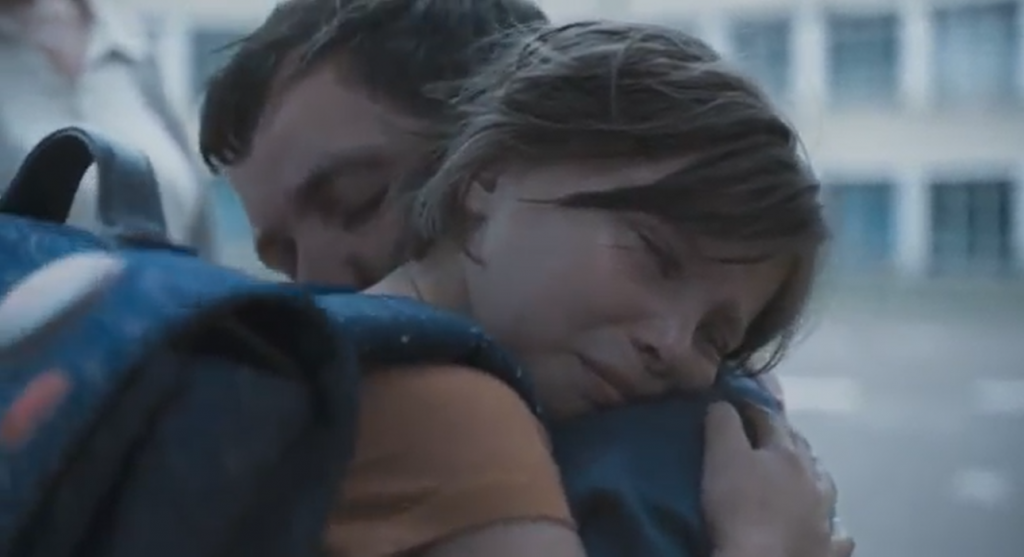

“Playground” is a Drama/Narrative directed by Laura Wandel in 2021. The film starts with the main character crying. She is wearing a backpack and clinging to her brother. It is very clear to the audience that it is the character’s first day of school, and she’s terrified. It’s up to the actor to express or play a role in realism, and this actress does a good job portraying how scary it is to leave your parent on the first day of school. The way she’s gripping onto her brother also shows how frightening it is to be separated from your sibling.
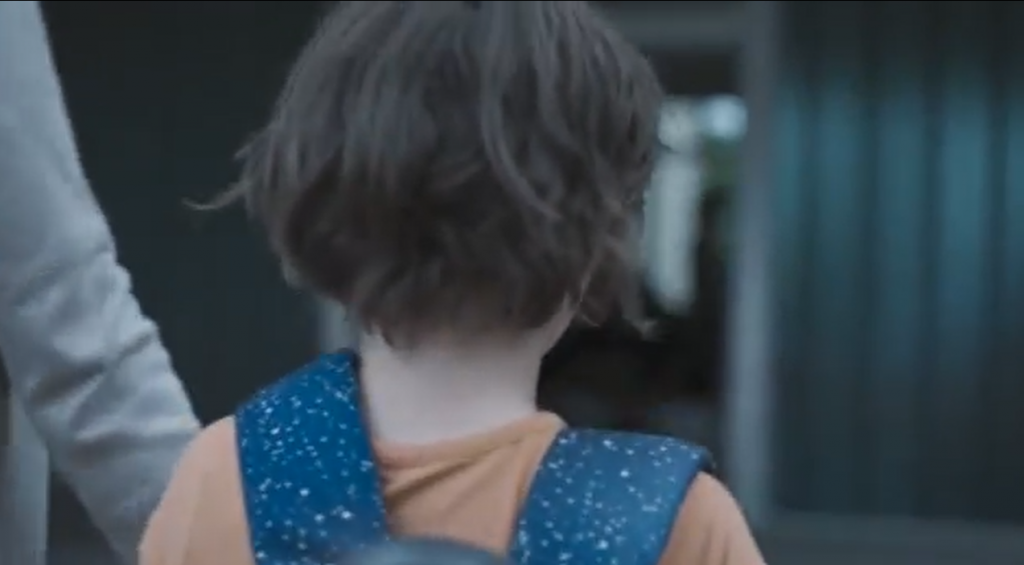
As Nora is walking into the school, the sound of children yelling is augmented to illustrate how overwhelming the first day of school is. The camera also fades as she’s walking to show how consumed you could get once you walk into school.
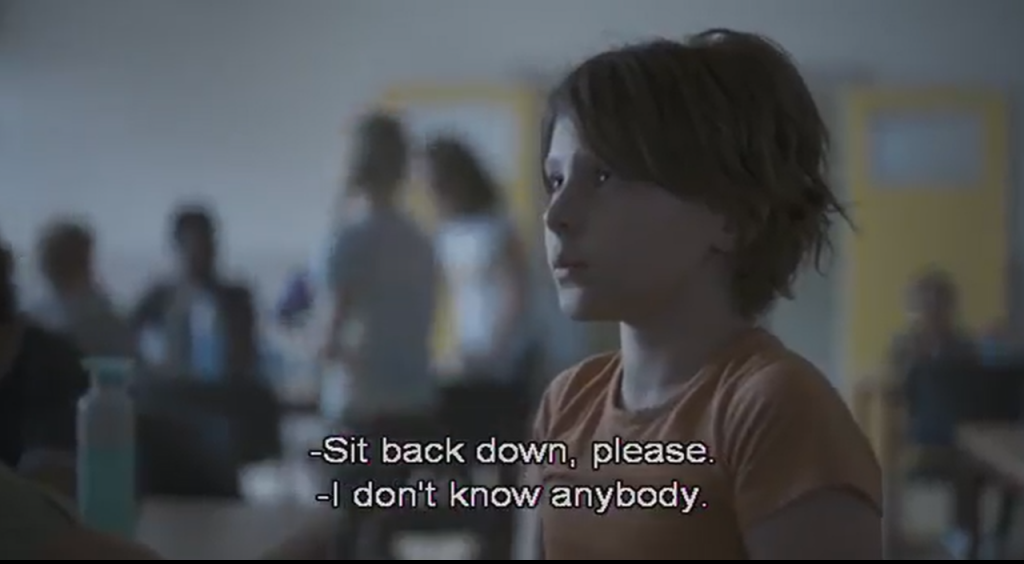
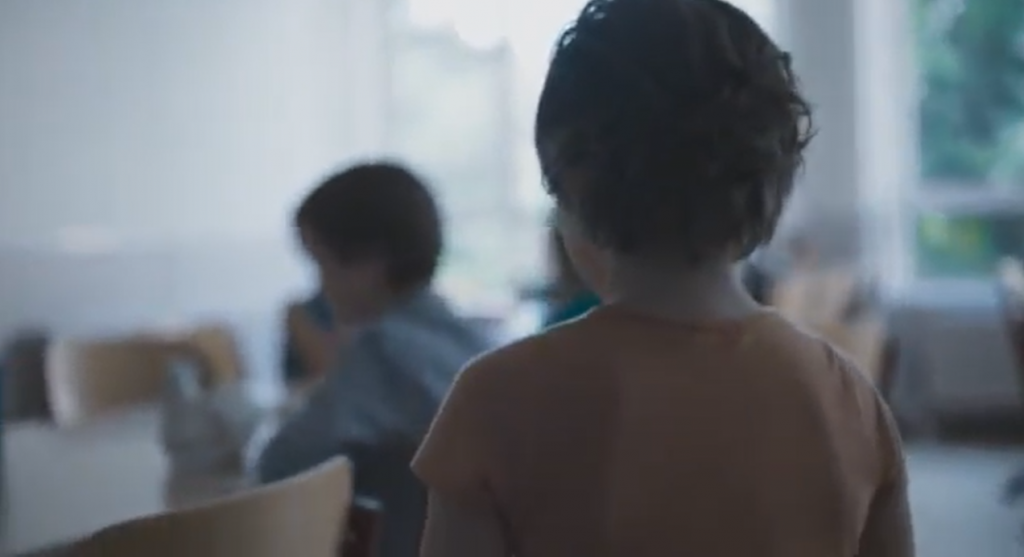
Nora keeps wanting to go sit with her brother during lunch, but the teachers keep telling her to sit at her table and make friends. Wandel does a good job of exhibiting how it feels looking for a seat at lunch. That experience is daunting when you don’t have any friends. In The Last Detail, it’s explained that realism is “not to capture reality but to express how an experience feels.” In this scene, the audience feels that sense of anxiety that Nora is experiencing.
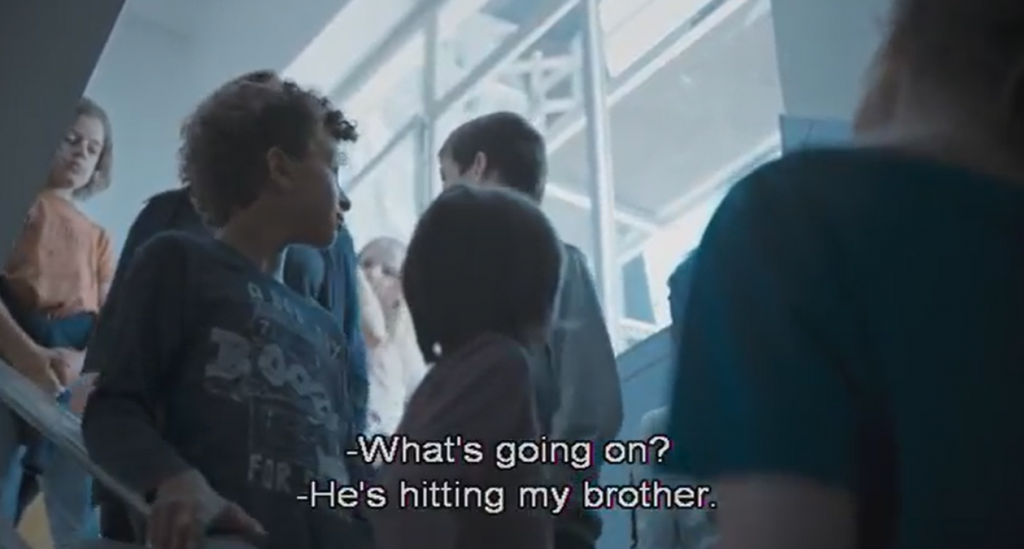
Right from the beginning, it is established that Abel is being bullied. Nora is quick to look out for him and seek help. For me, in general, reading or watching about bullying makes me feel uncomfortable and sad for the characters. The topic is always a heavy one, and it always makes me want to hug the character. With this topic, it is very easy for Wandel to incorporate realism throughout the film because it is something that many viewers might have encountered or experienced.
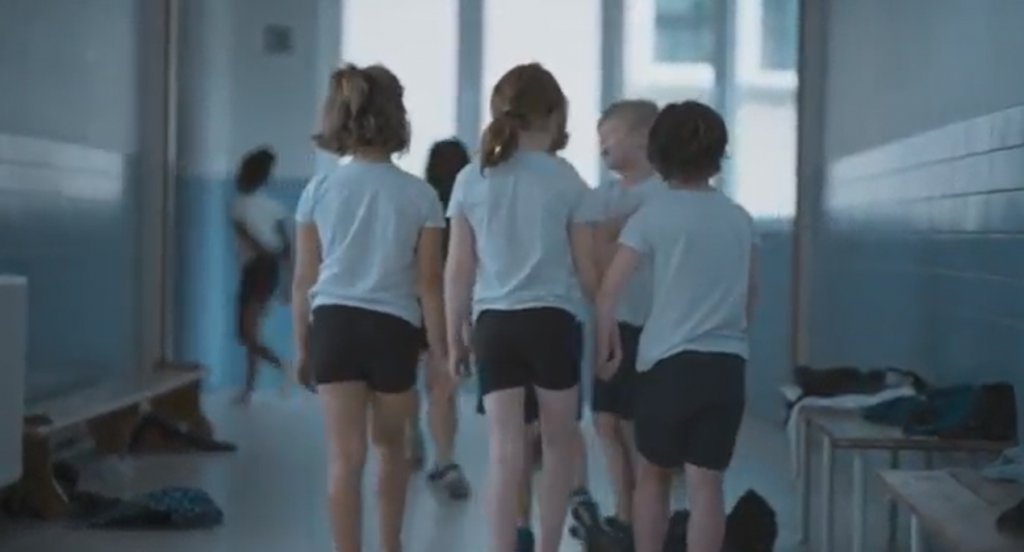
Nora made friends! I found the hand-holding among friends to be very cute, and I think Wandel portrays Nora’s friendships well.

I really admire how much Nora cares for her brother. After seeing that her brother was being shoved into the toilet, she ran to get help, but by the time she returned, the bullies were gone. She tries asking Abel what happened, but he ignores it and pretends to be fine. This is a common response from kids, especially as an older brother; he’s probably trying to be strong for Nora.

In this screenshot, Nora is scared to tell her dad about Abel getting bullied. She says “I promised not to say”, which shows that she’s afraid of getting in trouble for telling him. Her dad reassures her that he won’t tell anyone, and I feel that Wandel does a good job depicting how scary it is to speak up, especially if it’s something about your older brother.
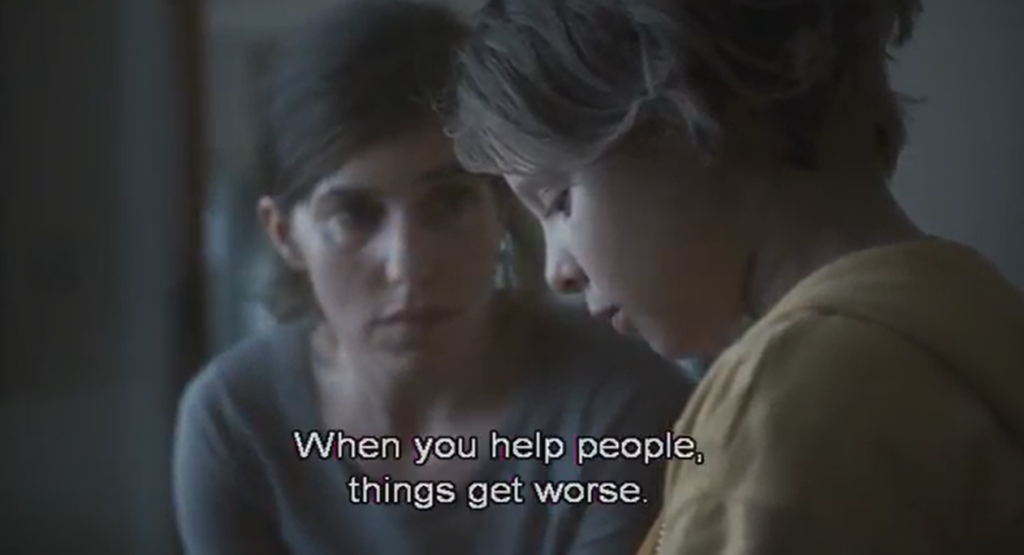
In terms of realism, I think a lot of people might relate to this scene. Nora feels like getting Abel help will make things worse. And if it gets worse, it will be her fault.
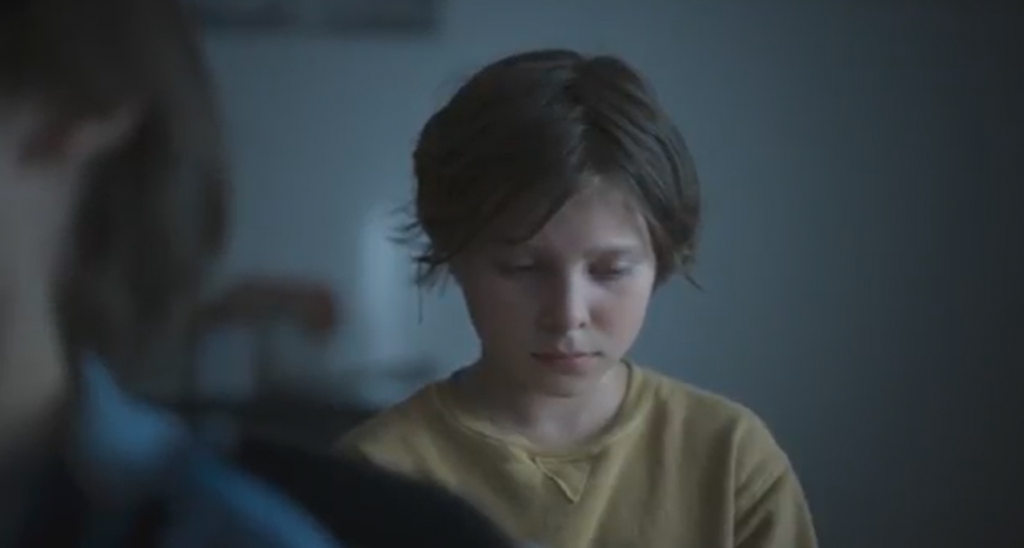
Guilt is strongly highlighted in this scene. All of Abel’s bullies and their parents were brought into the office to apologize to him. With each apology, Nora looked more and more guilt stricken, and you can tell she feels like it’s her fault that their parents found out. I can relate to this emotion because firstly, speaking out is difficult, and when it goes wrong, you feel completely at fault.
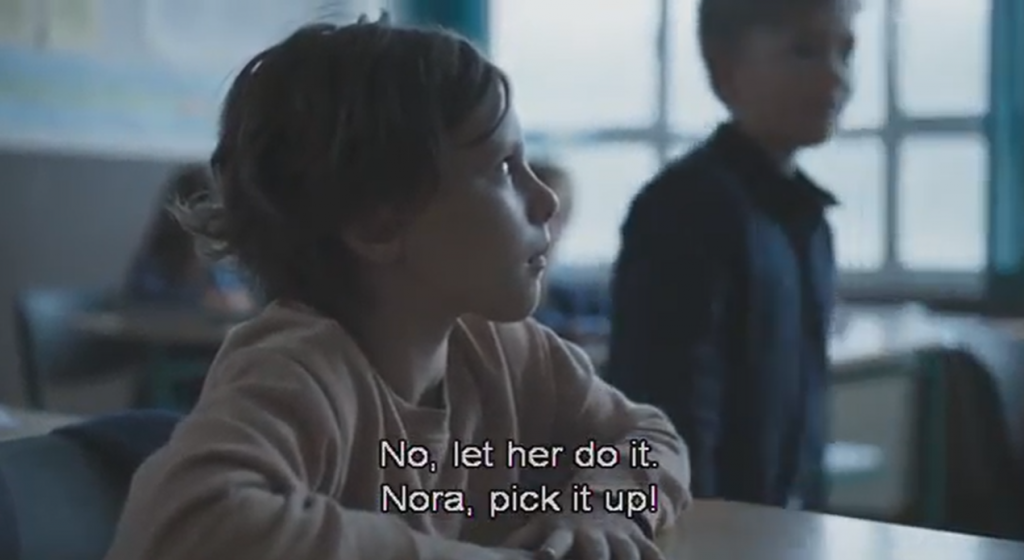
In this scene, I was able to find to factors of realism. The first one being that child throw tantrums when they’re upset. Nora pushed the notebooks off the table and refused to pick them up when the teacher asked. Second, the teacher scolded her, telling her to pick up the materials. Wandel is portraying to the audience that throwing a tantrum doesn’t help you. You have to be held accountable for your actions, regardless of whether you’re angry or sad.

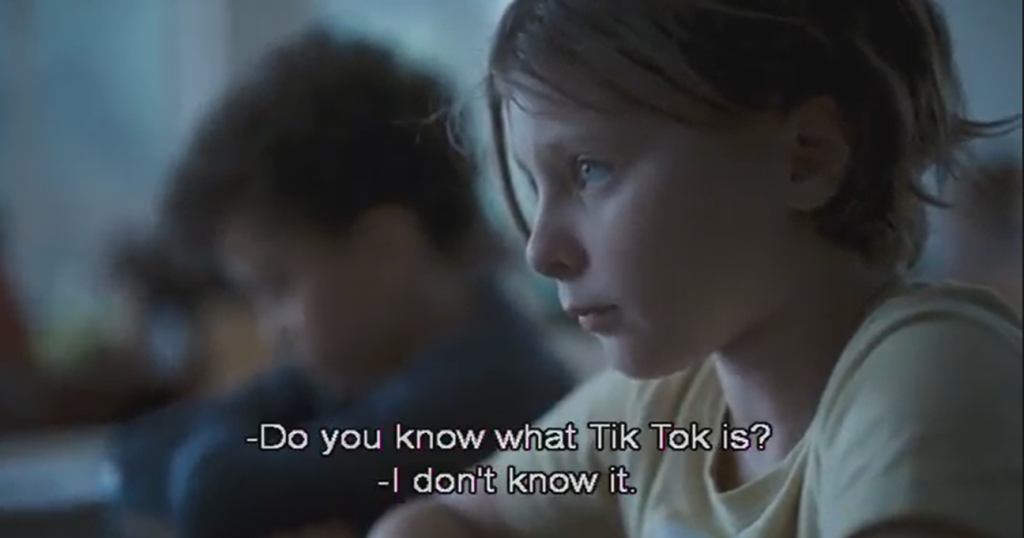
One of the main things of realism is depicting the real world to the audience, and in this scene that is very clear. Mentioning real world topics like social media is a good example of realism. In this scene, “Fortnite”, “Game of Thrones”, and “Tik Tok” are all mentioned. The mention of these topics kind of wakes up the audience, like “hey this is in the real world!” When “Tik Tok” was stated, I made me question how recent this film was made. These kinds of reactions are what makes the portrayal of realism successful.
This move was a Drama/Narrative, and its main focus was bullying, which is a real world concern or topic. But with it being a Narrative, it’s based of a true story, so there was mostly examples of realism in the film and little to no expressionism.
Rumble Fish
“Rumble Fish” is a Crime/Action film directed by Francis Ford Coppola in 1983. The first frame at the start of the film is a sign with graffiti on it. This is how the world and setting is established. It is clear to the audience that crime is important in this film.



The reflection of the sun on the building, then the camera dims to show that the sun has set, and it’s nighttime. I feel like this is a good representation of realism and how time passes.

The frame transitions from a close-up of them kissing to it fading to them lying on the couch to reveal a time skip. This kind of transition is a good example of expressionism.
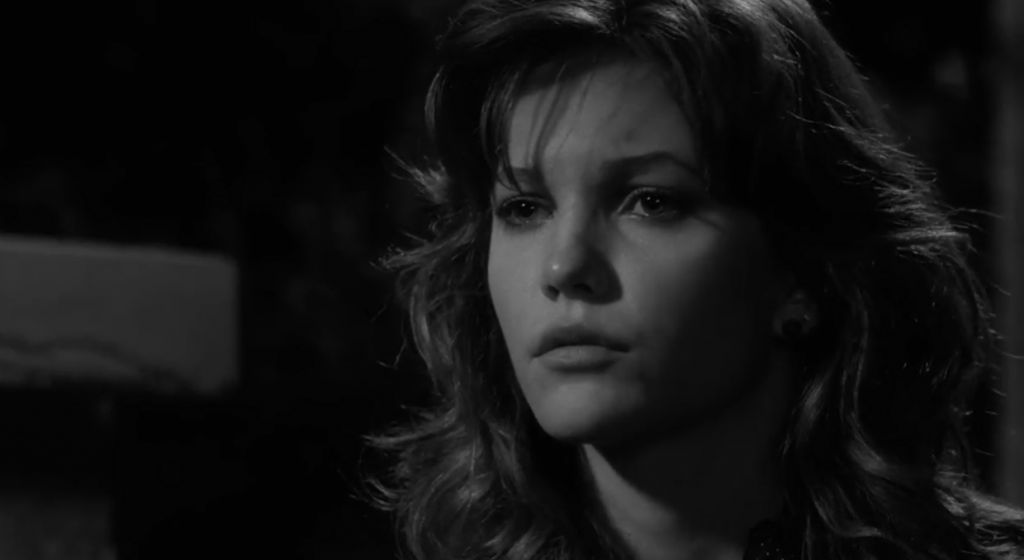
Coppola uses realism in this scene when a romantic tune is played in the background and the character watches Rusty walk away. Then, she says “I love you,” and this reveals to the audience that she’s worried about him, and that this might be the last time she sees him.
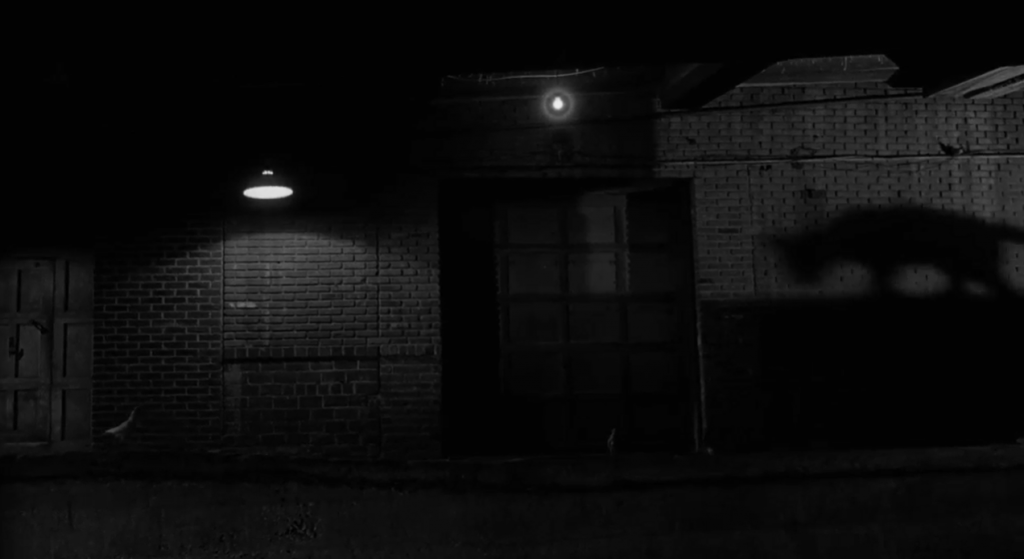
Steps echo, and the sounds of animals are amplified to make the audience feel as alert as the characters. This is a different example of realism and how scary it is to want to be a part of a gang.


This whole scene is very exciting. The music is upbeat and quick while the characters are fighting, and the shouting of their friends adds to the emotion of the scene. The train in the background adds to the excitement because it highlights the danger they’re in. They’re not in some low-key alleyway; they’re in an active train station. Expressionism is evident in the way the camera shakes and has jerky movements while filming.
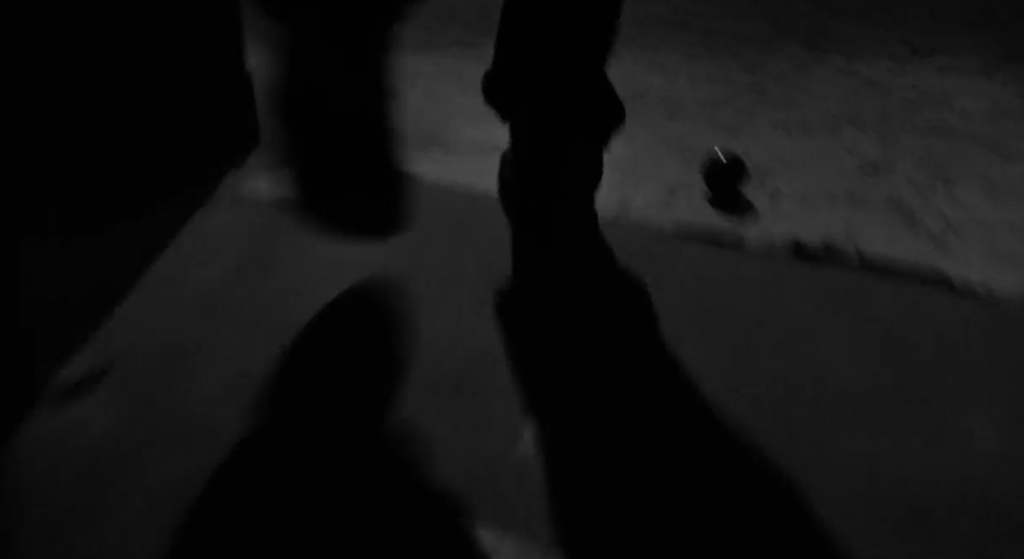
The camerawork is very shaky here too to emphasize how dire the situation is. The leader is dying! In The Last Detail, it’s stated that “an expressionistic approach is a lot easier to achieve in a soundstage, where light, shadow, set design, and other tools of cinematic style can be manipulated more easily.”
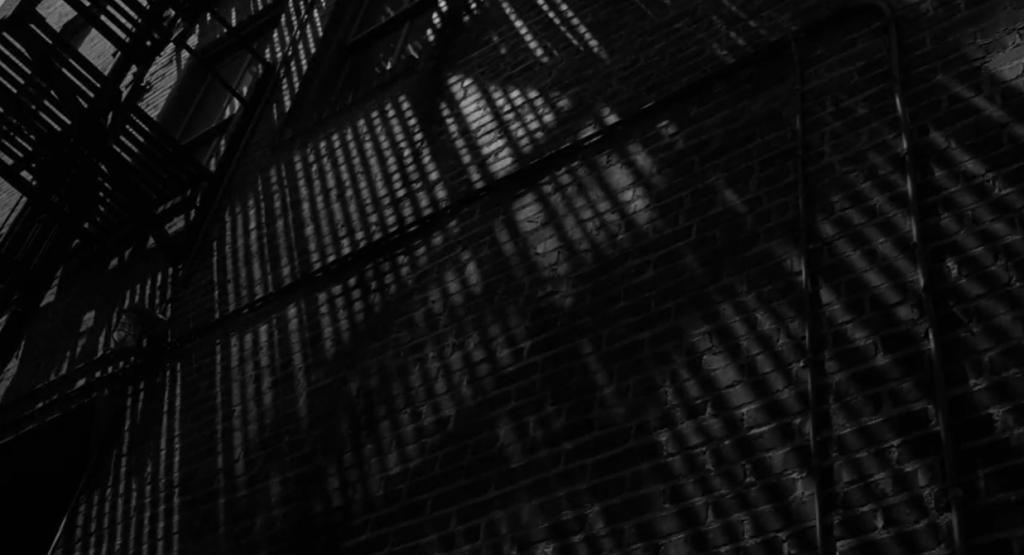
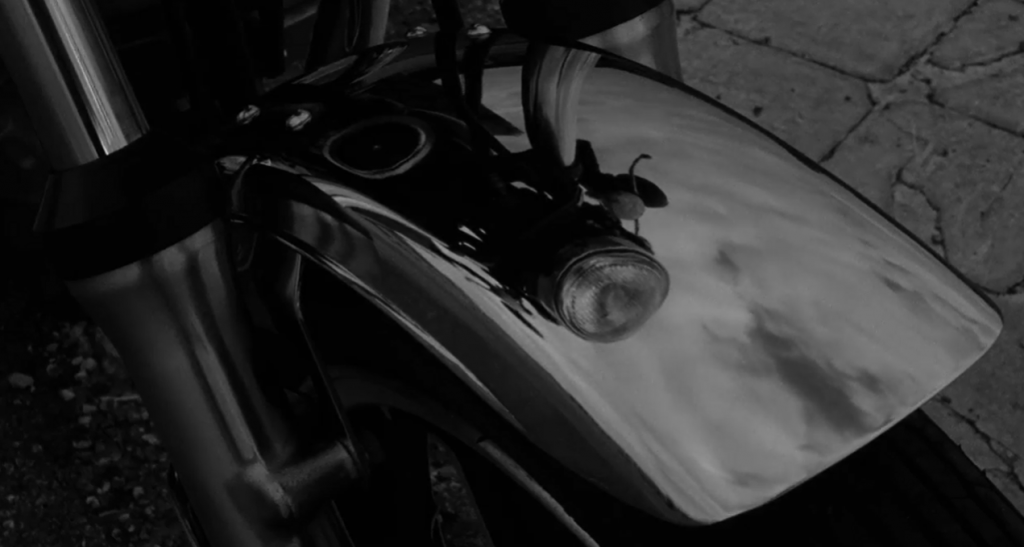
I’ve noticed that the film uses shadows and reflections of the clouds to show time passing instead of the usual scene of the sun setting.

In The Last Detail, it’s explained, “When using an expressionistic approach, filmmakers give realism lower priority in favor of using cinema’s formal elements to heighten or exaggerate the emotional experience of the characters or the setting.” In this scene, the audio isn’t as clear to show that this character isn’t thinking clearly.

In this screenshot, Rusty had just been bashed on the head and fallen to the floor. The character’s body is levitating to show that he’s dying. At first, I thought he had died, but he went unconscious and was having an out-of-body experience. Probably like when people talk about that space between life and death. Coppola uses the expressionist approach for this sequence because Rusty is literally floating in the air and practically swimming through it.

Leave a Reply